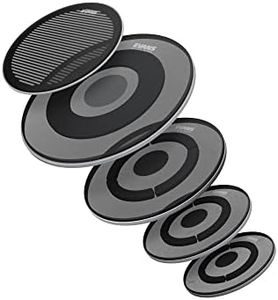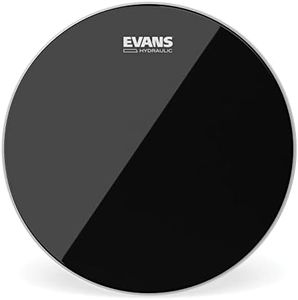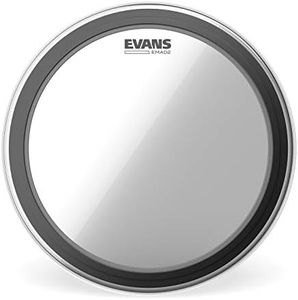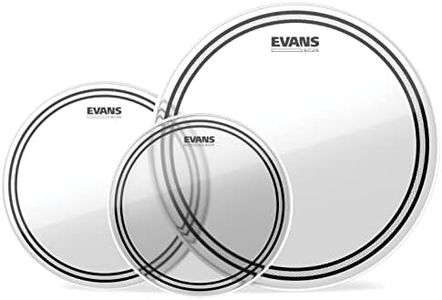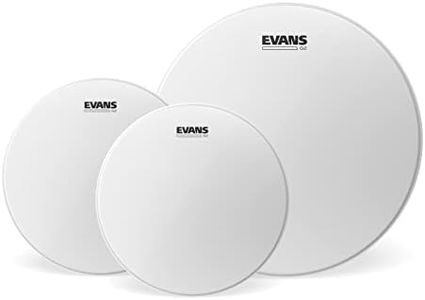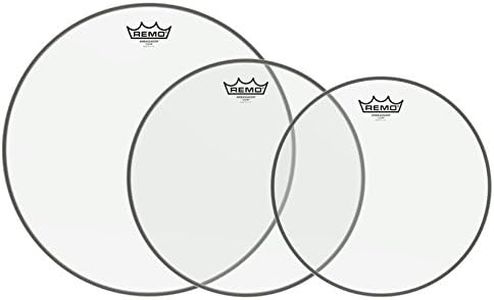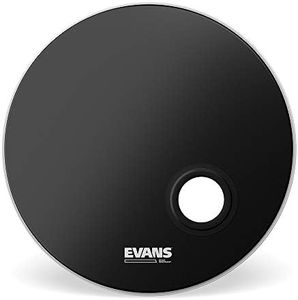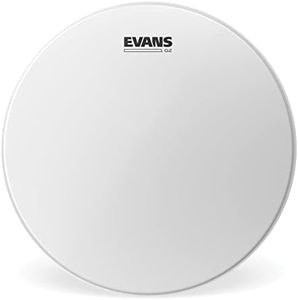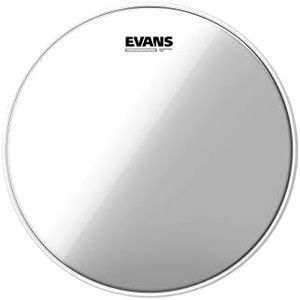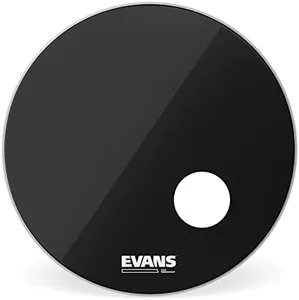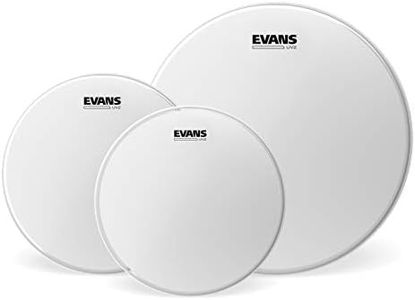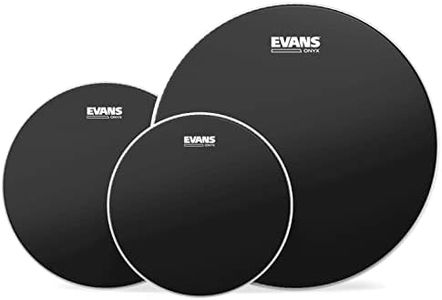We Use CookiesWe use cookies to enhance the security, performance,
functionality and for analytical and promotional activities. By continuing to browse this site you
are agreeing to our privacy policy
10 Best Drum Heads 2025 in the United States
How do we rank products for you?
Our technology thoroughly searches through the online shopping world, reviewing hundreds of sites. We then process and analyze this information, updating in real-time to bring you the latest top-rated products. This way, you always get the best and most current options available.

Buying Guide for the Best Drum Heads
Choosing the right drum heads is crucial for achieving the desired sound and performance from your drum kit. Drum heads come in various types, materials, and thicknesses, each affecting the tone, durability, and playability of your drums. Understanding these key specifications will help you make an informed decision that matches your playing style and musical needs.TypeDrum heads are generally categorized into batter heads (the top head you strike) and resonant heads (the bottom head that resonates). Batter heads are crucial for the initial attack and tone, while resonant heads influence the sustain and overall resonance. Choose batter heads based on your playing style—coated heads for a warmer, more controlled sound, and clear heads for a brighter, more open tone. Resonant heads are typically thinner and should complement the batter heads to achieve the desired sound.
MaterialDrum heads are made from different materials, with the most common being Mylar, Kevlar, and calfskin. Mylar heads are versatile and durable, suitable for various genres. Kevlar heads are extremely durable and are often used in marching bands for their ability to withstand high tension. Calfskin heads offer a traditional, warm sound but require more maintenance. Choose the material based on the sound you want and the level of maintenance you're willing to perform.
PlyPly refers to the number of layers in a drum head. Single-ply heads are thinner and produce a brighter, more open sound with more sustain, making them ideal for jazz and lighter playing styles. Double-ply heads are thicker, offering a deeper, more controlled sound with less sustain, suitable for rock, metal, and heavier playing styles. Consider your genre and playing intensity when choosing between single-ply and double-ply heads.
ThicknessThe thickness of a drum head affects its durability and sound. Thinner heads (7-10 mil) are more sensitive and produce a brighter tone with more resonance, but they wear out faster. Thicker heads (12-14 mil) are more durable and produce a darker, more focused sound with less resonance. If you play aggressively or need a head that lasts longer, opt for a thicker head. For a more nuanced, resonant sound, a thinner head may be preferable.
CoatingCoated drum heads have a textured surface that provides a warmer, more controlled sound with less overtone, making them ideal for jazz, blues, and studio recording. Clear heads, on the other hand, offer a brighter, more open sound with more overtone, suitable for rock, pop, and live performances. Choose coated heads if you prefer a more focused sound and clear heads if you want a more resonant, lively tone.
DampingSome drum heads come with built-in damping features, such as control rings or dampening dots, to reduce overtones and sustain. These are useful for achieving a more controlled, focused sound without the need for external dampening devices. If you struggle with excessive overtones or need a more controlled sound for recording or live performance, consider heads with built-in damping. If you prefer a more open, resonant sound, standard heads without damping may be more suitable.
Most Popular Categories Right Now
